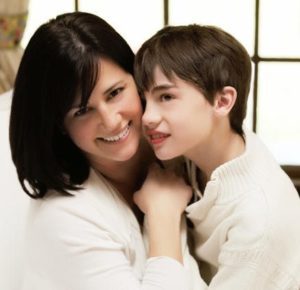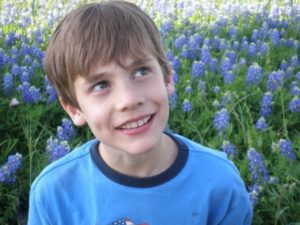On November 8th, 2022, CureSHANK is sponsoring an Externally-Led Patient-Focused Drug Development (EL-PFDD) Meeting for Phelan-McDermid Syndrome (PMS). Co-planned by the Phelan-McDermid Syndrome Foundation, this virtual EL-PFDD meeting will:
[give] the Food and Drug Administration (FDA) and other key stakeholders, including medical product developers, health care providers, and federal partners, an important opportunity to hear directly from patients, their families, caregivers, and patient advocates about the symptoms that matter most to them, the impact the disease has on patients’ daily lives, and patients’ experiences with currently available treatments. Come and share about the impact PMS has had on your family and symptom improvements that would benefit you and your loved ones.
This meeting will be held from 10am to 3pm ET. You may pre-register and submit your comments ahead of time here. On November 8th, you can also return to that link to watch the meeting live!
Ahead of this important meeting – which will raise PMS awareness and inform regulatory decision-making in the future – I sat down with Geraldine Bliss, the President and Co-Founder of CureSHANK and mother of a 24-year-old son with PMS.

In our interview, Geraldine and I discussed what Phelan-McDermid syndrome is, the impact on their children and families, advice for the newly diagnosed, and the importance of being an advocate within this sphere.
What is Phelan-McDermid Syndrome (PMS)?
Phelan-McDermid syndrome, or 22q13.3 deletion syndrome, is a rare genetic condition. It occurs when a deletion or other structural change occurs in the long arm of chromosome 22 in the q13 region. PMS may also result from SHANK3 variants. Most cases of PMS occur spontaneously, although this condition can (in rarer cases) be inherited. Typically, symptoms of PMS manifest within the first two years of life. Symptoms and severity are variable. Potential symptoms and characteristics can (but do not always) include:
- Autism spectrum disorder
- Seizures
- Absent to late speech
- Mild to severe global developmental delays
- Sleep disorders
- Difficulty eating or swallowing
- Hypotonia (weak muscle tone)
- Heart or kidney defects
- Constipation
- Nausea and vomiting
- Lymphedema
- Neuropsychiatric illness or manifestation
- A flat midface, wide brow and nasal bridge, full cheeks, and deep-set eyes
- Dolichocephaly (a head shape that is longer than usual from front to back)
- Behavioral difficulties
- Difficulty with toilet training
Geraldine and Charles’ Story
When Geraldine Bliss’ son Charles was growing up, she noticed that he had a slight speech delay. She began asking the pediatrician about this delay when Charles was two years old, but the pediatrician didn’t seem too concerned about it. Regardless, Charles was referred for speech therapy and early childhood intervention. However, over the next few years, Geraldine noticed that Charles had some other delays. She explains:
He was just learning to speak and had about six hundred words. But he seemed to have some social delays, ADHD, and a few behavioral issues. He was diagnosed with autism just before his fourth birthday. We started him on some medication for ADHD, but he had some very unusual side effects. Eventually, we did metabolic testing and were referred for genetic testing. After doing a chromosomal microarray, we found out that Charles was missing a tiny piece of the 22nd chromosome that spanned a critical gene called SHANK3.

Geraldine immediately began reaching out to others in the PMS community. She connected with the Phelan-McDermid Syndrome Foundation for more information and resources. In 2006, her family attended their first meeting. She was surprised to find that not many children looked or acted like Charles. While Charles could read, write, and speak, many other children were non-verbal. Charles learned to walk at ten months old, but many other children were in wheelchairs. However, she shares:
We went back two years later and that’s when we met all these families whose children were like Charles. I think what happened was chromosomal microarray was in wide use then and was able to identify children with small deletions. Prior to that point, diagnosing PMS was difficult and done with karyotyping in most cases. Most of the kids diagnosed initially were missing up to one hundred genes and Charles was missing three. So some of the differences could’ve been attributed to that. Now we know it’s not just SHANK3 deletions but even the tiniest point mutations that can cause a loss of function.
Learning More about PMS
As Charles grew older, the family grappled with the impact of PMS and its symptoms. At eight years old, Charles began having seizures. Geraldine says:
It just exploded. He was having generalized tonic-clonic seizures every week and then every day, and then it was just dozens per day. He was losing sleep from back-to-back seizures and sometimes ended up in the hospital for a month or two at a time.
They began trying different therapeutic approaches but nothing seemed to work very well. Geraldine felt frustrated, explaining:
I felt like doctors were treating Charles as a guinea pig and taking the trial-and-error approach. I began wondering why we couldn’t have a more informed way of treating epilepsy, or targeted therapeutics for SHANK3.
So Geraldine decided to make a change. She spoke to the Phelan-McDermid Syndrome Foundation and volunteered to chair the Research Support Committee. In 2011, they organized a symposium to bring together scientists from around the globe.
During that meeting, Geraldine and others from the Foundation expressed that there was a patient community missing this gene and that research could inform future treatments. Eventually, this led to the creation of mutliple animal models of PMS. Later in time, Geraldine and the Committee created a patient registry.
Don’t forget to join us on Monday for Part 2 of our interview, where we discuss founding CureSHANK, more about the EL-PFDD meeting, and advice for families new to PMS.


